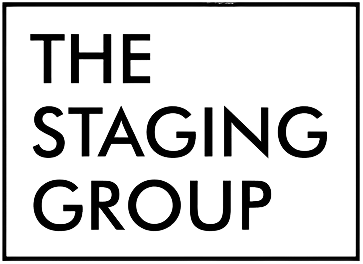Content
A halfway house enables an addict to find the support they need to continue their recovery. For example, residents find support in one another through peer support. The structure of a halfway house supports sober living and building structure and routine.

So when getting back on our feet and in recovery, cooking and cleaning for ourselves is part of a healthy recovery plan. A halfway house has many advantages, particularly for individuals who may not have a strong personal support system at home. Many people choose a halfway house to start recovery in a temptation-free environment. Others go for the recovery services, such as group counseling and access to 12-step meetings, such as Alcoholics Anonymous or Narcotics Anonymous. For individuals who might be starting their recovery after incarceration, a halfway house can help them find employment by offering specific job-seeking services and guidance. You’ve gone through medical detox and completed an inpatient or outpatient treatment program.
Learning How to Live with Others
Support groups aid in the recovery process and provide peer networks which can last long after leaving the halfway house. Transportation is also a consideration when selecting a house in which to reside. Halfway houses for sober living combine elements of both rehab and standard housing. Though halfway houses are often stigmatized as a last resort, many of them are excellent options for people in need.
What is the politically correct term for halfway house?
What was once known as a halfway house, three-quarter house, transitional house or sober living home now falls under the heading of recovery residence.
We may have hurt the ones we love, do things we are ashamed of, and caused harm to ourselves. New patients are admitted in individual rooms providing one-to-one services and programming. As they become more independent, the dorms become bigger so that by the time the patient leaves, they are living in the 50–100-person dorm described above. Some facilities require a minimum number of days of sobriety from substance abuse, but many will work with you to determine if you’re a good fit.
Halfway House Activities
Some of the best memories of my life were made while living in halfway, and many of the friendships I created there are still prevalent in my life, years later. Finding people to grow in recovery and to celebrate your victories in sobriety early on is one of the best ways to get planted into the recovery community. More importantly, it teaches you how to be a friend again, a lesson often forgotten in active addiction. The first and most obvious benefit you’ll receive as a result of living in a halfway house is learning accountability. As mentioned before, a halfway house (a good one at least) will sport a variety of rules intended to provide a strict guideline of responsible living.
They provide a supportive, safe space where people can live free of addiction with others who share the same goal. Terra House is a licensed halfway house program for alcohol and drug addicted adults who have successfully completed a primary inpatient addiction treatment. Other rules consist of following a curfew, performing assigned chores, and maintaining halfway house activity an atmosphere of recovery while living at the house. A halfway house is intended to teach recovering addicts and alcoholics responsibility and how to be accountable for themselves and others. Understanding what a halfway house actually is will be the first step towards making your decision to undertake this portion of your recovery journey.
Who Can Live In A Halfway House?
People living in halfway houses may have a current addiction to drugs or alcohol or be in recovery from one, have a chronic mental illness, or be transitioning out of the prison system. Halfway houses are typically funded by federal or state government programs, and many only offer bare accommodations due to budget restraints. Most sober living homes are open to people struggling with drug and alcohol addiction, although some are available to people with behavioral addictions such as sex addiction, gambling, or overeating. In some cases, halfway houses help people with a specific type of substance use disorder. Even in cases where recovering addicts are enrolled in such programs, they are welcome to take part in the sober living house’s activities affiliated with the halfway house directory. Thus, sober living homes provide their residents with the support and structure that they need to maintain their sobriety.

There is a vibrant recovery community at Transcend waiting to empower you. Anderson House is a residential program for women recovering from alcoholism and drug addiction who are at high risk for relapse. If you wish to contact a specific medical detox center then find a specific treatment center using our addiction treatment locator tool. Initially, they were meant to house and rehabilitate juveniles who had committed crimes.
All of the individuals that live in a sober living facility are new to addiction recovery. Thus, it’s usually a requirement within sober living homes for residents to abstain from alcohol or drugs while living there. This helps sober living home residents get a break from the temptations to abuse substances that they must constantly face while functioning in society. A halfway house can be https://ecosoberhouse.com/ the next step after residential or outpatient treatment. Also known as transitional living environments or recovery residences, halfway homes give you the time and space to adjust to your sobriety. Also like other sober-living environments, halfway houses generally have systems in place to keep residents sober, and drugs tests are usually administered to monitor for any substance use.
Please use our extensive knowledge of the treatment industry to find the right program for you. It can be difficult to make the transformation from round-the-clock rehab to your normal, everyday life. If you go straight back into the life you left for rehab, you may easily fall back into the same old habits that got you there in the beginning. It can be fun and relaxing to go out for drinks with your friends on Friday nights after a long work week or have a cocktail before bed.
During inpatient care, patients will participate in different types of therapy and support groups. Inpatient rehab does not allow patients to leave the facility until their program is complete. Sober living houses usually don’t include rehabilitative treatment programs and only require that their residents remain in recovery. Residents will likely only need to pay for their own expenses at sober living houses. Halfway houses are generally less regimented and allow more freedom than an inpatient treatment program. Still, they provide more structure and support than you receive at home.
What does it mean when someone lives in a halfway house?
The term “halfway house” can refer to a number of different types of facilities, but in this briefing we will only use halfway house to mean one thing: A residential facility where people leaving prison or jail (or, sometimes, completing a condition of probation) are required to live before being fully released into …
Many treatment programs utilize a 12-Step approach, and many of those recovering choose to attend meetings after they complete their treatment. Halfway houses are designed to teach skills, build community and provide an opportunity for individuals to learn more about the process of living without substances. Newer participants who experience sobriety for the first time may find it a challenging environment but it is worthwhile to participate and integrate the new skills into a lifestyle change.


